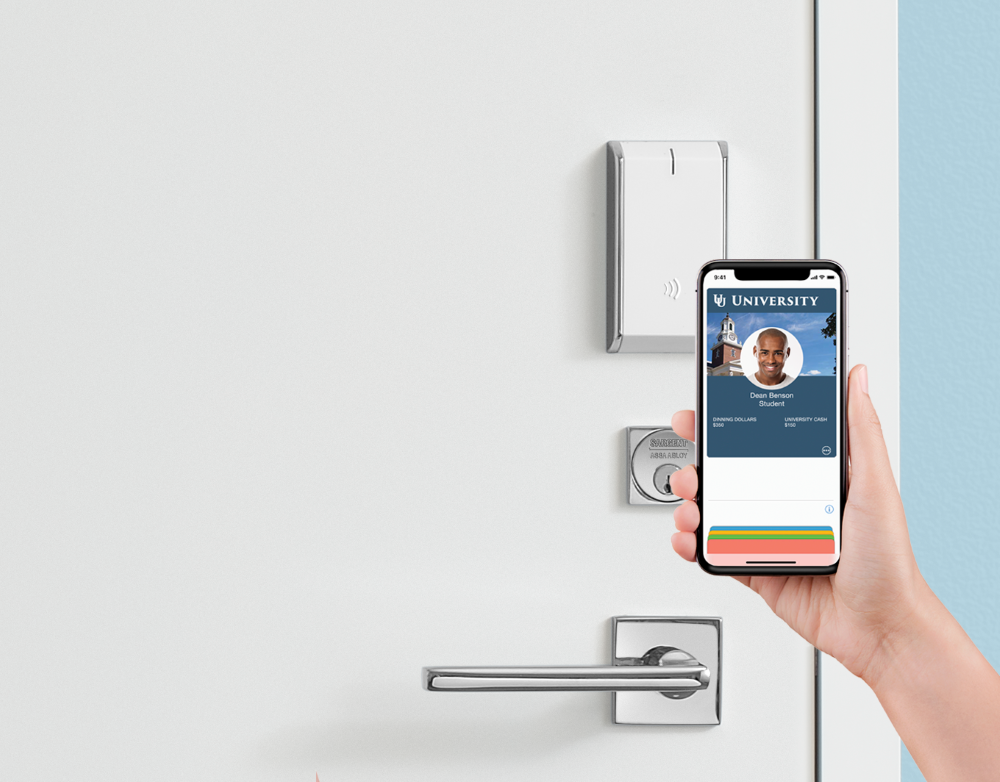College and university campus settings are open environments with so many access control needs that it’s necessary to maintain a high degree of flexibility and movement across the gamut of housing units, academic buildings, research centers, specialized labs, and venues. Advanced ways to schedule and authorize entry to spaces for extracurricular activities are now also a must-have in order to make the most of higher education facilities and administrator time. New package delivery locker systems are another part of the equation as students order more necessities online.
Equally important is a robust level of security to accommodate all of these requirements and to activate a quick response for securing openings when a sudden incident occurs. Such a mix of security and flexibility across the large footprint of a college campus poses challenges for higher education stakeholders, and for many manufacturers of door opening products. Fortunately, this can easily be solved with the comprehensive continuum of door and access solutions available for colleges and universities today.
That continuum keeps expanding with innovations like wireless, Wi-Fi and PoE (Power Over Ethernet) intelligent locks, touchless and low-touch door opening solutions, and the rapid adoption of mobile access credentials that’s supplementing or replacing key cards altogether. In fact, higher education is leading the way in the migration to mobile credentials for electronic access control, thanks to the popularity of Apple Wallet and Google Pay applications that students now use for just about every transaction.
Keeping up with the needs and latest innovations in security and access control is complex by itself, but the most critical issue today is the ability to manage the tens or hundreds or even thousands of doors around a campus as efficiently and effectively as possible. That requires capturing all the data about that vast number of doors, and a team that knows how to maximize the use of the information.
Compounding that challenge is the current trend of locksmith, facility, and security personnel retirement, retention, and recruiting activity. Here are some ways your campus can maintain its institutional access control knowledge during the “Great Resignation.”
Capture the Value of Your Doors
There’s a greater appreciation today for the high value that doors play in creating a safe, secure, and healthy learning environment and in providing fluid movement around campus. As a result, decision makers at institutions of higher education are now looking at door openings as vital assets instead of merely necessary expenses.
That realization means complete information about these assets needs to be catalogued and monitored in a more precise way throughout the entire lifecycle of a building. Subsequently, schools are implementing comprehensive systems to identify and track door opening assets including:
- Documenting existing doors and hardware for facility management and maintenance
- Smart tagging to provide easy access to data about each door
- Creating virtual design guides to ensure consistent standards in all new construction and renovation projects
- Managing master key systems to improve operational processes
This approach benefits the campus from both a financial and a security perspective. Proper documentation helps with specifying what’s needed for new builds and for renovations that can be shared with architectural, design, and construction teams. The use of project punch lists to manage what is specified, bid, and supplied can be a useful tool to verify quality control throughout a project. Getting as-supplied documentation is also crucial for efficiency and cost control before and after a project gets handed over to facilities management.
When something is treated as an asset on a balance sheet, capital funding can be used to maintain it. That makes it easier to keep up with technology upgrades proactively instead of relying on deferred maintenance funding only when it becomes available.
Smart tagging at each door allows maintenance staff with permissions to pull up detailed information about the product on each opening, including part numbers, warranties, and gives them the ability to order replacement parts and generate work orders, all right at the door. This streamlines maintenance overall, so doors are always operating properly.
Access Control Data Boosts Security Too
From a security standpoint, it’s equally important to be able to understand and communicate exactly what is on each door and how it should operate. This ensures the university has the right level of security throughout campus and visibility into every detail of its doors.
The ability to view this level of detail is also necessary for the key system, which can be a vulnerability in facility security. When you issue a new key, card, or mobile credential, it’s paramount to know exactly what level of access is being provided to a user. Today, solutions exist to manage every aspect of a key and credentialing system.
Schools are also moving toward standardizing to a single access control software instead of trying to bounce among four, five, or six disparate systems that emerged over time as housing and academic buildings came online.
Documentation is enormously important, but it’s also a huge undertaking. Even with experienced security and facility teams on board, creating comprehensive documentation can be a strain on resources. The ability to capture information from thousands of doors in a timely manner isn’t always possible or the most efficient option for internal teams. Fortunately, many manufacturers offer professional services with field resources who are door hardware experts and can complete the task easily, so institutions are set up for success.
Retirements: Knowledge Flying Out the Door or New Opportunities?
To stay on top of door security and access advancements efficiently and effectively, universities and colleges need an internal workforce that’s able to master the installation, connectivity, operational, and maintenance requirements of these more sophisticated door security solutions as well as the management of the documentation data. Which brings up another issue: labor shortages.

ew package delivery locker systems are another part of the access control equation as students order more necessities online. Photo courtesy ASSA ABLOY
Many locksmith veterans are retiring from colleges and universities, which can lead to a loss of institutional knowledge. Detailed standards, design guides, and smart tagging can help alleviate that loss of knowledge. So can an eagerness to keep learning and growing. While retirements and attrition may temporarily complicate things, they can also have a positive impact, opening doors for bright, enthusiastic members of the existing talent pool or “new collar” candidates looking to expand their skills in an important, rewarding livelihood where there’s always something fresh to learn.
As locksmiths retire and new players step in, comprehensive solution/product knowledge and expert installation become even more critical. That’s why many manufacturers have extensive and intensive training available.
Training helps teams get quickly up to speed on existing and emerging door security trends and products, facilitating faster adoption and reducing stress and resistance during workforce transitions. Training is also crucial for employee retention, demonstrating an institution’s commitment to continuing education for locksmith, facility management, and campus security pros seeking to renew or advance their careers.
Opportunity abounds in the locksmith and campus security profession. For those who love to work with their hands, possess a natural aptitude and curiosity about mechanical and electromechanical innovations, and embrace new technology in general, door opening security and access control solutions offer an exciting, ever evolving, vital pursuit.
With assets fully captured and the next breed of installation and maintenance professionals in place, managing campus doors should be as easy as using mobile credentials and wave to open solutions.
Jeremy Saline is senior director of business development for ASSA ABLOY Opening Solutions













